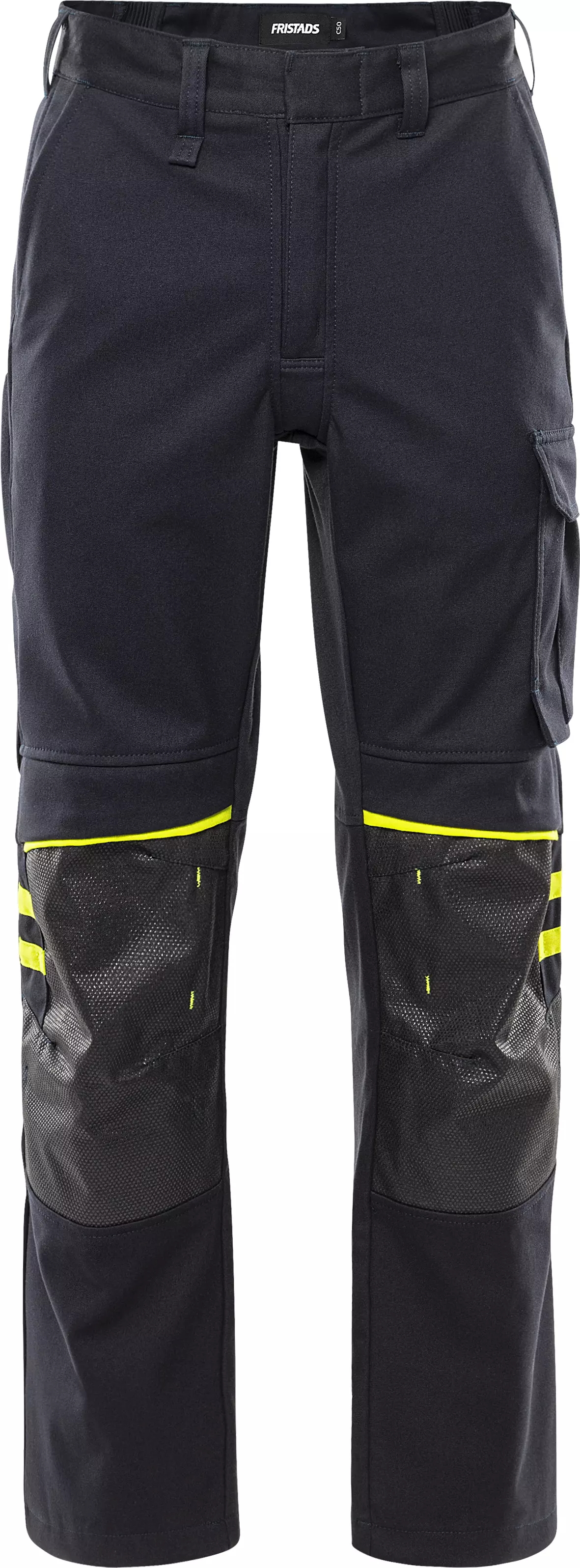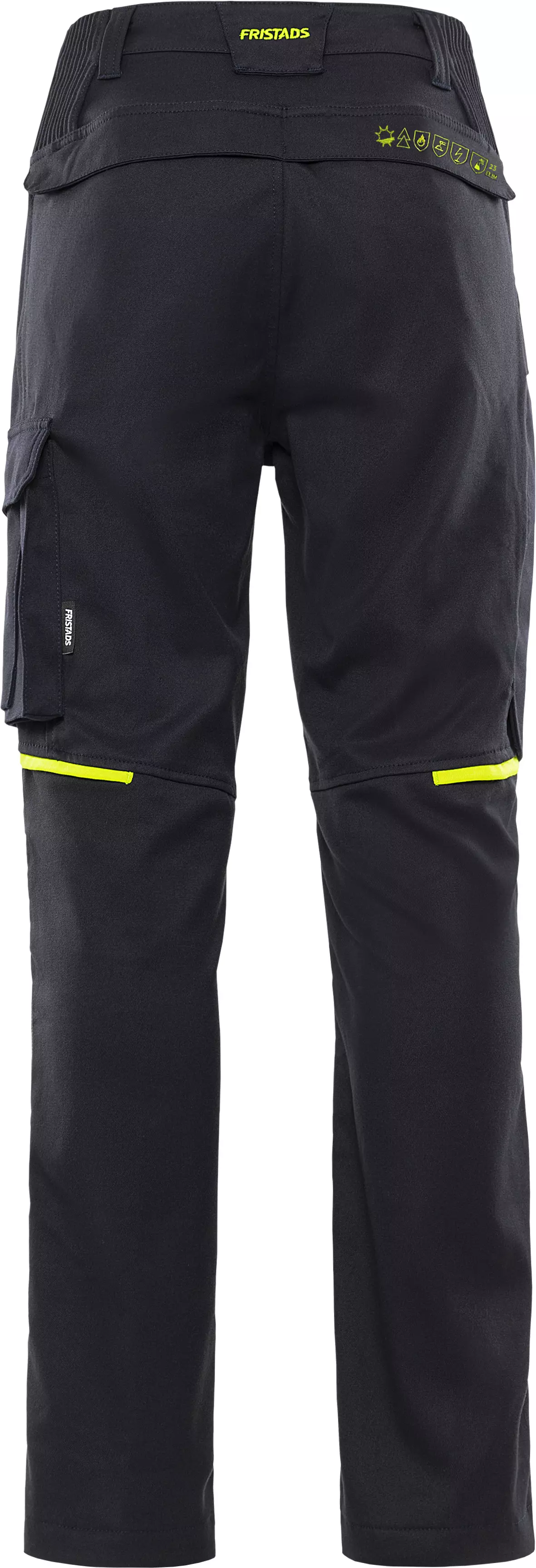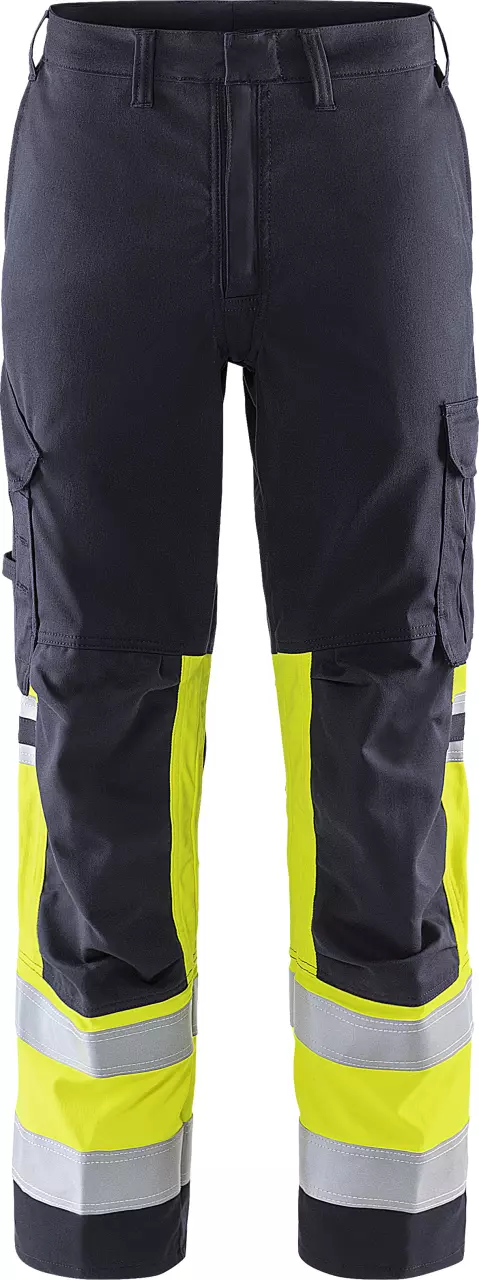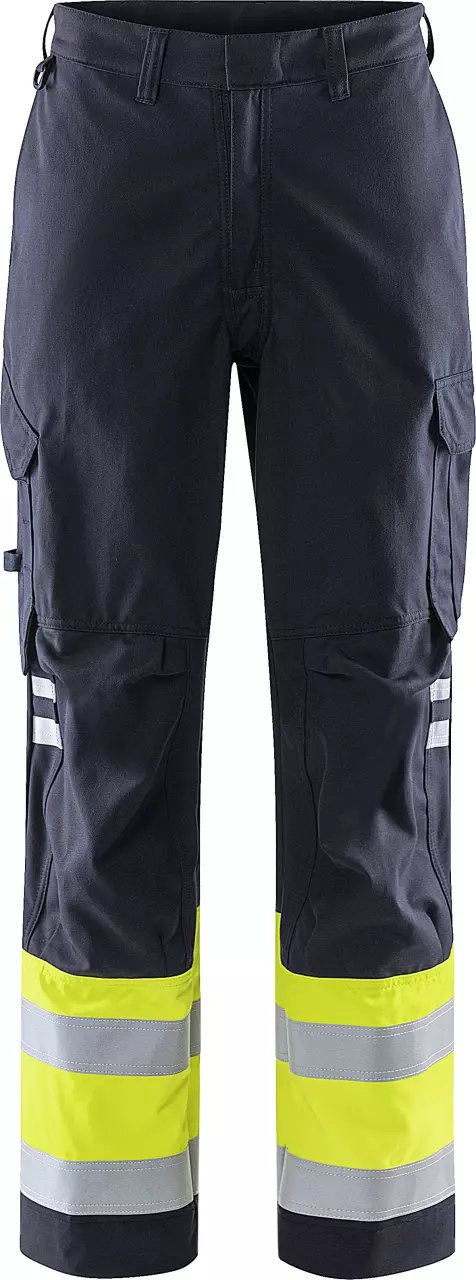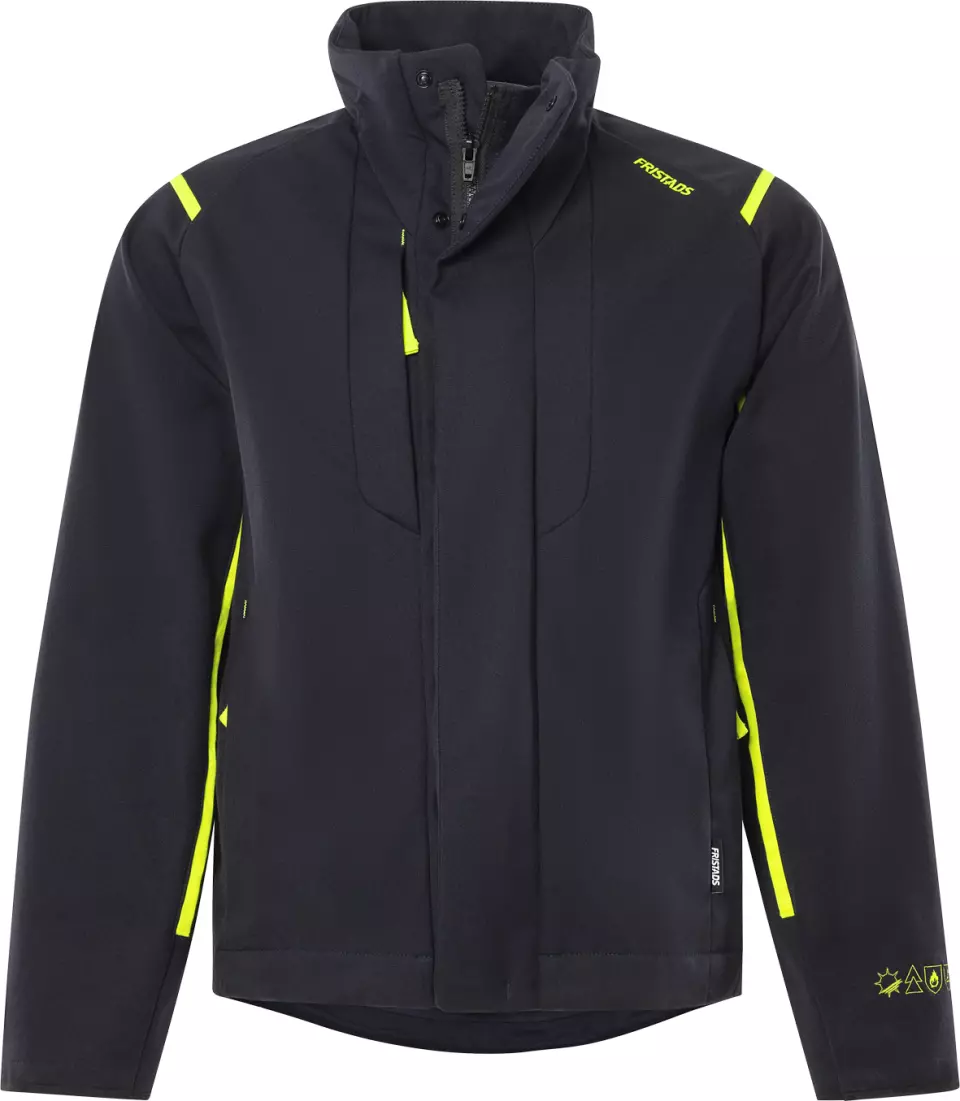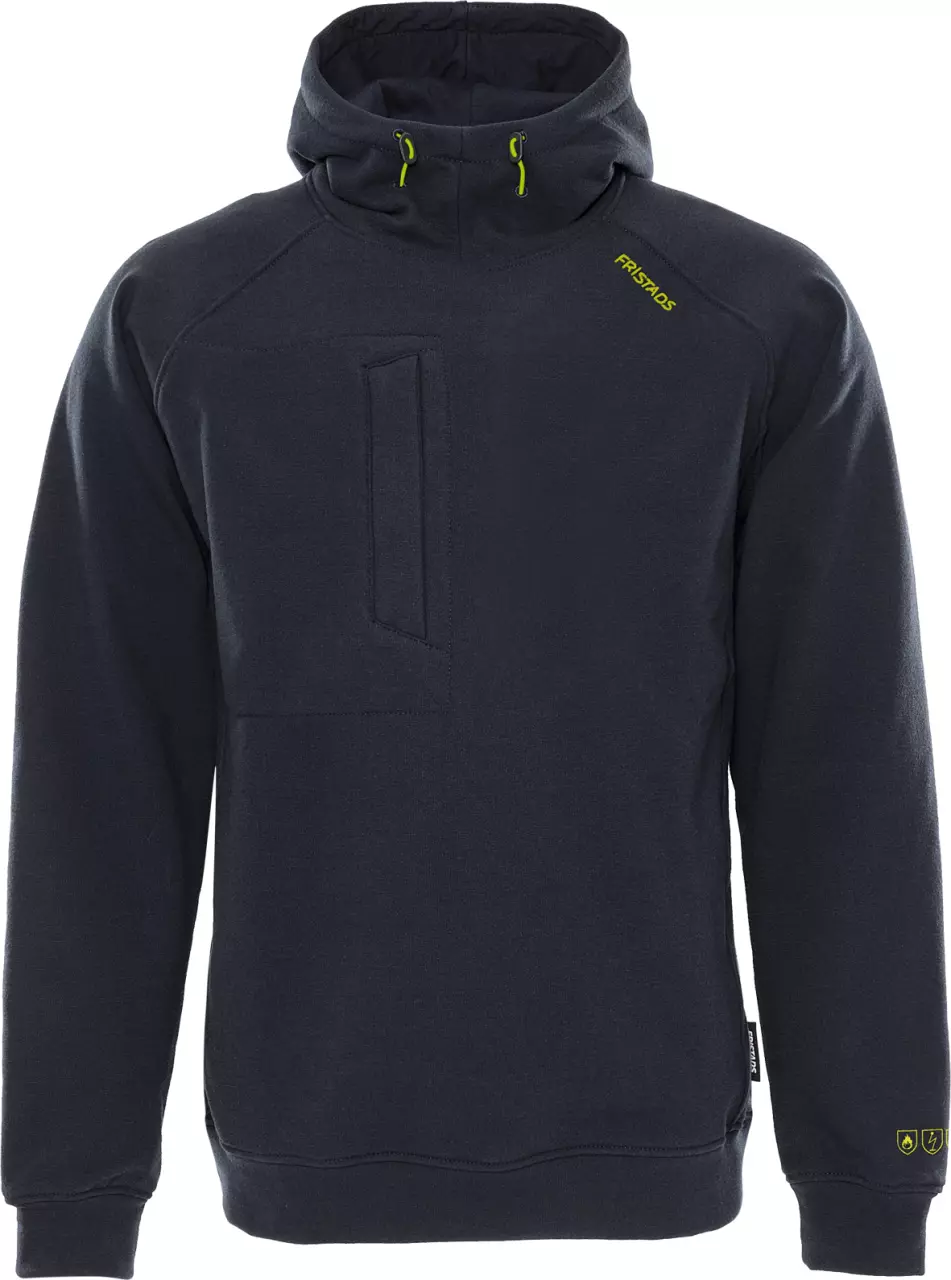These flame-resistant stretch pants made from softshell material offer comprehensive protection for demanding work environments. With windproof and water-repellent properties as well as aramid-reinforced areas, they ensure durability and comfort for year-round use. The pants meet multiple safety standards including arc flash, flame and UV protection and are constructed both PFAS-free and metal-free.
Product Features:
- Softshell stretch material, windproof and water-repellent
- Ribbed stretch inserts at the waist
- Large aramid-reinforced tool pocket
- Pre-shaped knees with aramid-reinforced knee pockets and inner opening
- Adjustable leg length with 5 cm hem allowance
Technical Details:
- Material weight: 365 g/m²
- Body zone: Lower body
- PFAS-free and metal-free
- Height adjustment for knee pads in knee pocket
- Double-reinforced crotch seam
Standards:
- EN 61482-1-2 APC 2
- EN 61482-1-1 ELIM: 23 cal/cm² EBT: 28 cal/cm²
- EN ISO 11612 A1 A2 B1 C2 F1
- EN ISO 11611 A1 A2 Class 2
- EN 1149-5
- EN 13034 Type PB [6]
- EN 14404 together with knee pads 124292
- EN 13758-2 UPF 40 UV protection, material tested UPF 500 UV protection
- ISO 15797 Rental laundry tested
- OEKO-TEX® certified
These flame-resistant stretch pants made from softshell material offer comprehensive protection for demanding work environments. With windproof and water-repellent properties as well as aramid-reinforced areas, they ensure durability and comfort for year-round use. The pants meet multiple safety standards including arc flash, flame and UV protection and are constructed both PFAS-free and metal-free.
Product Features:
- Softshell stretch material, windproof and water-repellent
- Ribbed stretch inserts at the waist
- Large aramid-reinforced tool pocket
- Pre-shaped knees with aramid-reinforced knee pockets and inner opening
- Adjustable leg length with 5 cm hem allowance
Technical Details:
- Material weight: 365 g/m²
- Body zone: Lower body
- PFAS-free and metal-free
- Height adjustment for knee pads in knee pocket
- Double-reinforced crotch seam
Standards:
- EN 61482-1-2 APC 2
- EN 61482-1-1 ELIM: 23 cal/cm² EBT: 28 cal/cm²
- EN ISO 11612 A1 A2 B1 C2 F1
- EN ISO 11611 A1 A2 Class 2
- EN 1149-5
- EN 13034 Type PB [6]
- EN 14404 together with knee pads 124292
- EN 13758-2 UPF 40 UV protection, material tested UPF 500 UV protection
- ISO 15797 Rental laundry tested
- OEKO-TEX® certified
These flame-resistant stretch pants made from softshell material offer comprehensive protection for demanding work environments. With windproof and water-repellent properties as well as aramid-reinforced areas, they ensure durability and comfort for year-round use. The pants meet multiple safety standards including arc flash, flame and UV protection and are constructed both PFAS-free and metal-free.
Product Features:
- Softshell stretch material, windproof and water-repellent
- Ribbed stretch inserts at the waist
- Large aramid-reinforced tool pocket
- Pre-shaped knees with aramid-reinforced knee pockets and inner opening
- Adjustable leg length with 5 cm hem allowance
Technical Details:
- Material weight: 365 g/m²
- Body zone: Lower body
- PFAS-free and metal-free
- Height adjustment for knee pads in knee pocket
- Double-reinforced crotch seam
Standards:
- EN 61482-1-2 APC 2
- EN 61482-1-1 ELIM: 23 cal/cm² EBT: 28 cal/cm²
- EN ISO 11612 A1 A2 B1 C2 F1
- EN ISO 11611 A1 A2 Class 2
- EN 1149-5
- EN 13034 Type PB [6]
- EN 14404 together with knee pads 124292
- EN 13758-2 UPF 40 UV protection, material tested UPF 500 UV protection
- ISO 15797 Rental laundry tested
- OEKO-TEX® certified
